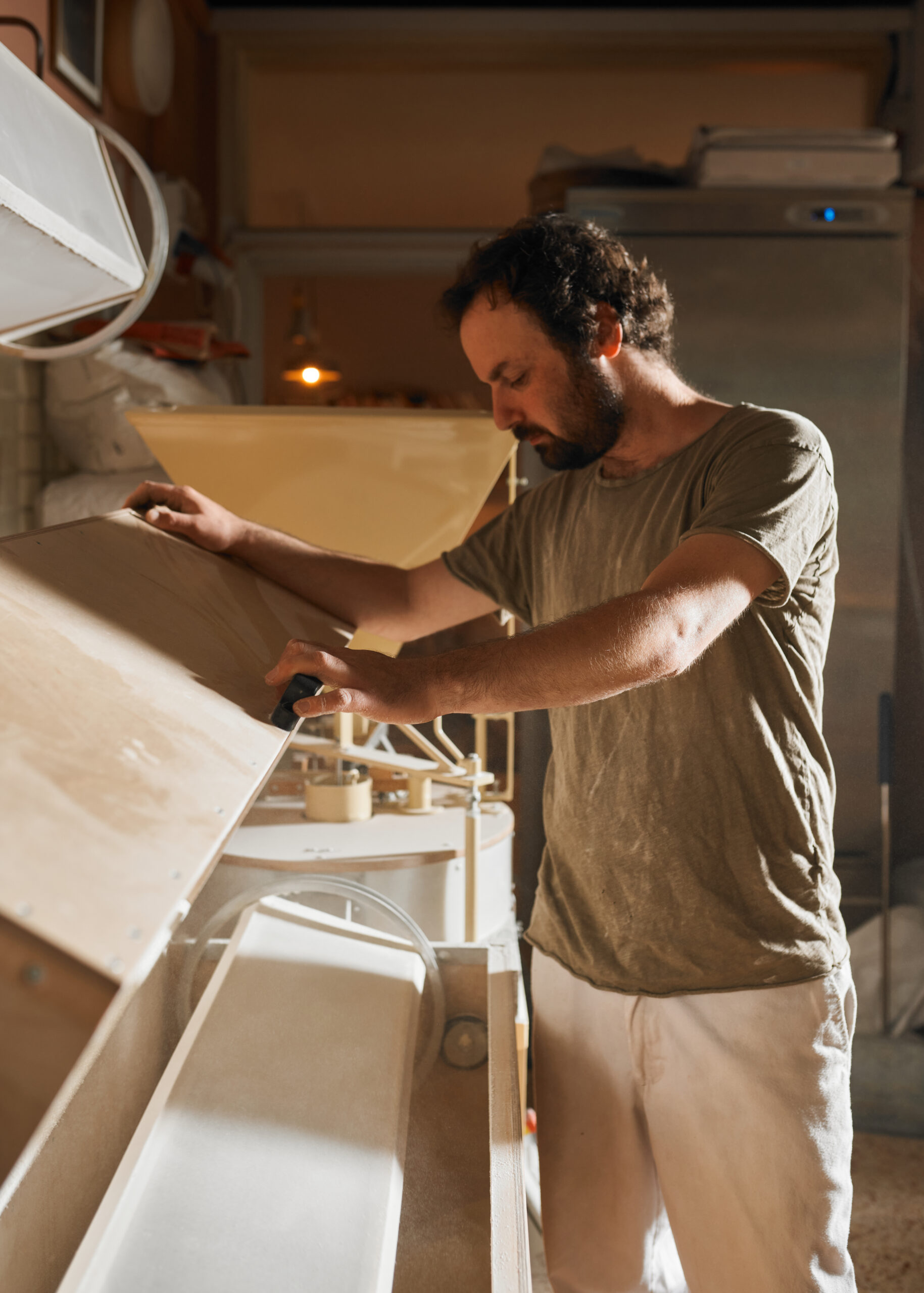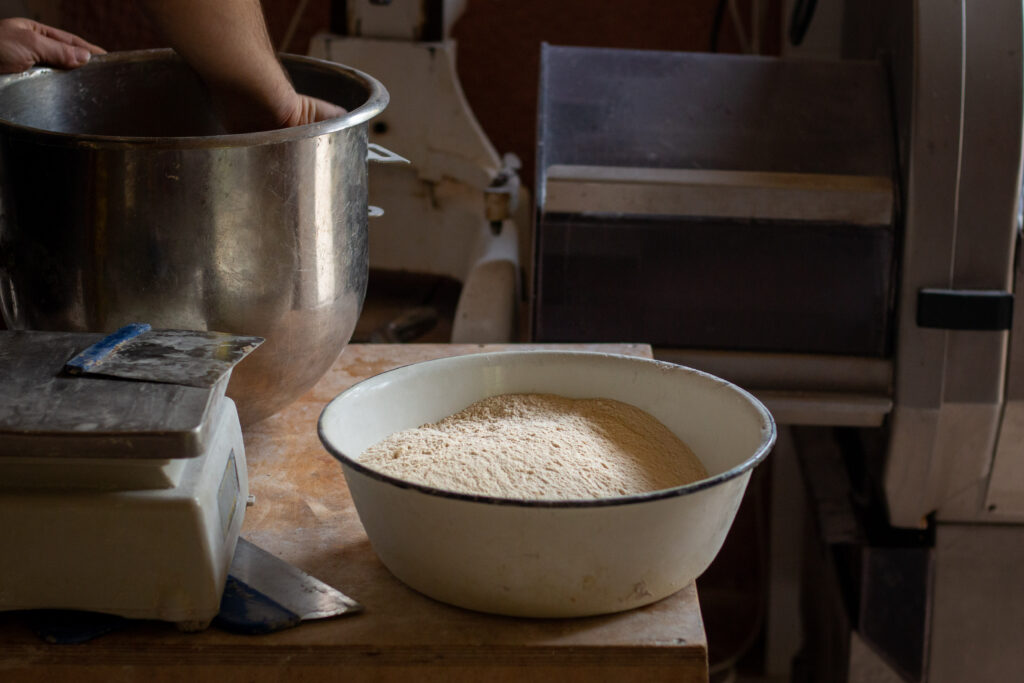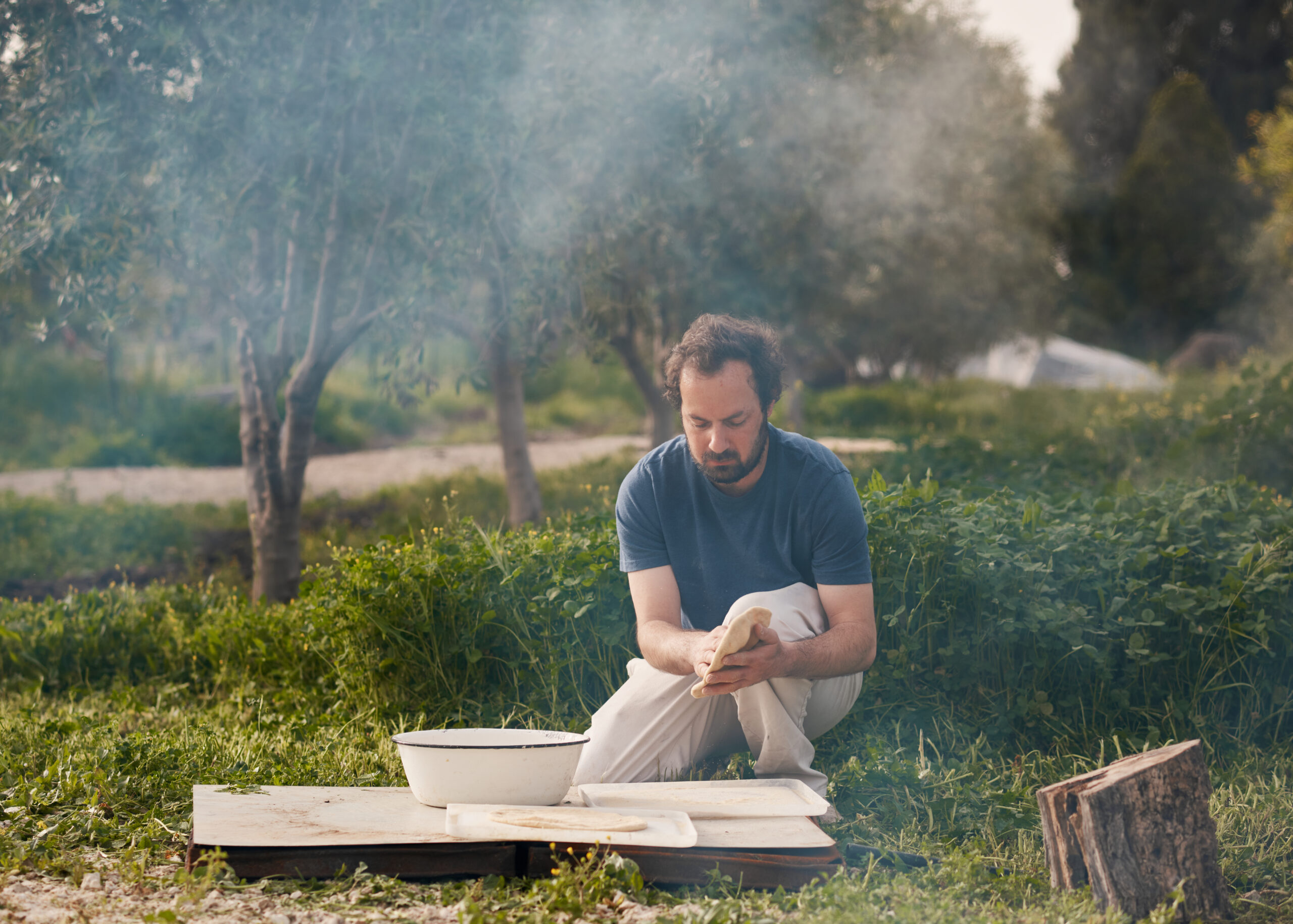The first time I tried working with traditional varieties of wheat was in Brittany, France at a workshop for agricultural bakers (paysans-boulangers). Everyone was wondering what brought me there. I explained that I wanted to learn about the traditional and ancient varieties of wheat that I discovered through Youtube, articles, and books. The teacher immediately replied that the class should have been the ones to come to me — to the historic Fertile Crescent — the origin of wheat.

His reply struck me. I was born in the 1980s into a family of local bakers. My great-great-grandfather immigrated here from Poland and founded the first bakery in Petah Tikva. Yet, I was always looking west to European bread traditions, visiting bakeries and baking exhibitions in France and Germany, and dreaming of bringing some of this magic to Israel.
When I came home from the workshop, I started researching the history of the agricultural revolution. I read about agronomist and botanist Aaron Aharonson and the discovery of the mother of wheat, and about the great agricultural researcher Norman Borlaug and his “Green Revolution,” which helped developing countries substantially increase grain production and fight off famine.
Land of Wheat
Things really changed for me five years ago, at the onset of the Land of Wheat project. Led by the Weizmann Institute and Volcani Center it aims to recover the lost wheat landraces that grew and adapted to the environment here generations ago. I visited lab technician Naomi Avivi at Weizmann, and something clicked. She was growing hundreds of traditional wheat varieties in small pots, and I arrived in the springtime, in the month of Nisan, when wheat is at its marvelous peak. It was the first time I witnessed the surprising height of the stalks, and I was amazed at the different colors and intriguing shapes of each variety.


But, my euphoria was tinged with a certain sensation of despair. How does a baker approach an ingredient with such a breadth of varieties and such a long history? There are limited seeds for these heirloom varieties. For each to be bred for baking, select seeds must be sowed repeatedly in small plots until there are enough seeds to plant a large plot, which will ultimately yield seeds that can be ground into flour. At the end of this long process, one might very possibly find out that despite the breathtaking beauty of the stalk, the aromas of the resulting bread simply aren’t interesting enough. It’s even possible that none of these fabulous varieties are suitable for baking bread — perhaps the Arab fellaheen (farmers) who grew them hundreds, even thousands of years ago, used them to make bulgur or freekeh. Where does one begin?
I contacted Roi Ben-David of the Volcani Center, and with the help of his talented team discovered wheat landraces that had grown locally for hundreds or thousands of years, and were kept in seed banks around the world. Varieties with names like Abu Fashi, Jaljuli, Horani, Hitiya Suada, Gaza, Falestinskiya, and Dubiya Samra. I learned that each local community in the region grew its unique varieties, according to its agricultural preferences or varying culinary needs.
Heading for the Fields
I had been so focused on European bread traditions that I did not realize a treasure was right under my nose. I decided that like agricultural bakers in France, I would try to grow my own wheat. As an urban guy from Petah Tikva who knew almost nothing about agriculture, I was venturing into unknown territory. I started with a one-acre plot in Moshav Nehalim where I learned to distinguish wheat from barley, and wide-leaf plants (mallow, milk thistle, mustard, and more) from narrow-leaf plants (oat, wild barley). Since I decided not to use herbicides, I had to learn the exact timing for sowing the crop and how to prepare the lot — whether to till, disk, or plow it.

I became conversant in a new language, and despite some bitter failures, I felt I was getting closer to my key ingredient. I started wondering why each winemaker is familiar with his varieties, knows how to monitor his vines, which elevation and soil type is right for each grape, and when the best time for harvesting is; yet I, as a baker, had no clue where my wheat was growing, what processes it underwent, and how it was stored. I didn’t know when it was sewn and at what density, or how to distinguish soft wheat from hard wheat by its appearance. The process of growing my own made me a far more attentive baker.
After five years of experimentation, I managed to collect enough grain to start growing it on a larger scale through a collaboration with a wonderful family of farmers, Dubi and Itay Noy, at the Sharona moshav. I brought them bags of grains, feeling I finally had the basic vocabulary and knowledge to discuss my expectations from the plot they were cultivating for me. They planted five acres of traditional wheat varieties, and after harvesting and cleaning, I was finally able to start baking with local, heirloom wheat. I was euphoric.
A Baker in Crisis
But during one of my visits to France, I was asked by Franc, a baker I met in the paysans-boulangers workshop, to share a unique Israeli recipe. I was embarrassed. I realized: I was baking the same bread as him, using the same methods, just with local wheat. For a moment, I felt like a phony. My whole life, I’ve been afraid of imitating others; I’ve tried to find my own voice in everything I do. But, I had nothing to show him, no loaf to represent the place I come from. I was a baker in an identity crisis.

I still feel this way — I’ve only just started baking with historic recipes from the region. My journey as a baker to the realm of traditional landraces brought up complex questions. I realized that like many Israeli chefs, who have developed a unique language based on local ingredients, I, too, keep returning to the field, to the raw ingredient itself. Unlike local chocolatiers or coffee makers, who work with foreign ingredients that have to be imported, we bakers ought to consider ourselves blessed that wheat feels at home here.
I hope more Israeli bakers will find their way to this local treasure. It does not matter if later on we decide to make pita, loaves of sourdough, or baguettes, as long as we treasure and preserve the place where we choose to live and bake.
Hagay Ben Yehuda is a fifth-generation baker who has been working with sourdough for nearly a decade. He adds: “The thing that leads me in my endeavor is to stay as close as possible to nature and simplicity, to understand that I am another tier in the chain of generations. I did not invent anything.” You can find his loaves at the Cafe Asif, and at Shuk HaNamal on Fridays.


